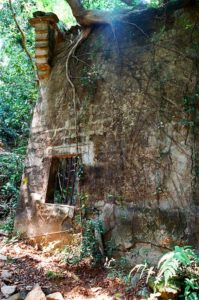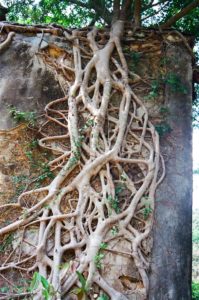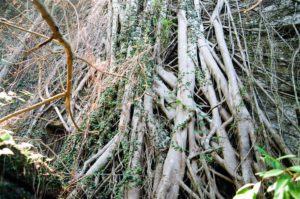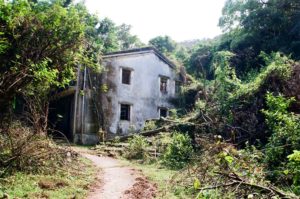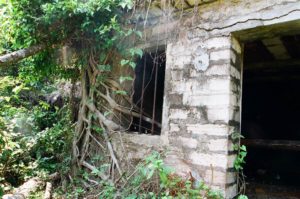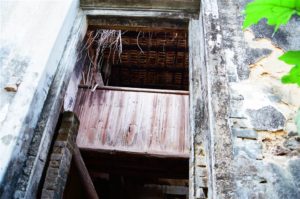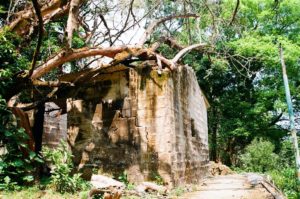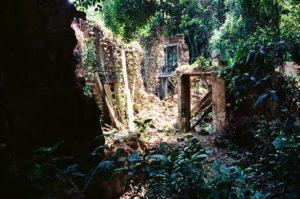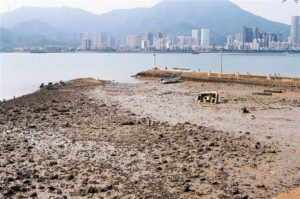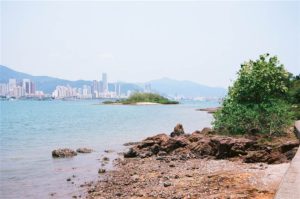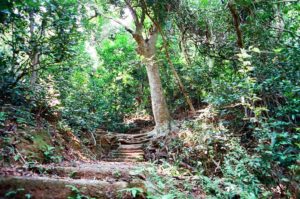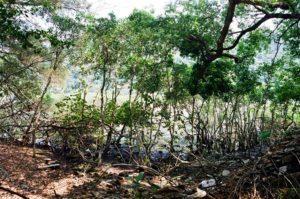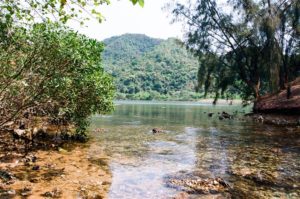Beautiful Sha Tau Kok – The Abandoned Village of Yung Shue Au

The destination of the day was the abandoned village of Yung Shue Au, meaning “the Banyan Pass.”

The Itinerary
We parked at Luk Keng and hiked on the seaside trail along Sha Tau Kok Hoi (also known as Starling Inlet). Having passed first Kai Kuk Shue Ha (10 minutes), then village of Fung Hang (30 minutes), the islet of Shui Tsum Tsui Pai (10 minutes), Kuk Po (30 minutes), then arriving at Yung Shue Au village (a little over an hour) and Yung Shue Au Bay. We then returned on the same route to our starting point. We spent a total of about five hours to and from Yung Shue Au, including about twenty to thirty minutes of picture and touring time in the village.
About Yung Shue Au
I took interest in this abandoned village because some bloggers said it is the Angkor Wat of Hong Kong. Old banyan trees grew their roots over the ruins, the houses of the Wans that used to thrive as a village. The Wans came to Hong Kong and founded the Yung Shue Au Village in 1671. During the 20th century, the village experienced a few periods of ups and downs. The villagers abandoned the village during WWII. This area, including Luk Keng and Nam Chung, was heavily fortified by the Japanese Imperial Army during the war.
Then in the 1960s, the villagers returned to the village to restore their former homes. The village thrived again. But as the hikers can tell, this area is out of the way. From a land route one would have to go for more than two hours from the main road of Luk Keng, let alone the fact that the area was long restricted during the Colonial times. The sea route would take villagers to the piers nearby, but still even the piers are about an hour away from the village. This inconvenience directly affected the livelihood of the villagers. Many left before the 1980s and settled down in Sai Kung instead.
In 1951 the Colonial government established the Frontier Closed Area, restricting access to this whole area of Sha Tau Kok including the Yung Shue Au village. For a long time the government imposed a curfew order on residents within the Frontier Closed Area, the purpose was to smother smuggling activities and illegal borer-crossings. At all times it required a special permit to visit these villages. The restricted order on this area was released only in 2012. [i] In fact, the sign posts showing this to be a restricted area still stand to this day.

In the 1980s, the British army stationed here in Yung Shue Au with a patrolling post. About 60 British soldiers stayed in this village, and that brought about the villagers’ return to the village. For the time that the British soldiers stayed here, the village was good again. Until 1985, when the British soldiers left, the villagers abandoned the village once again, and for good.[ii]
Views on the Trail
The route along Sha Tau Kok Hoi was scenic. The high rises of Shenzhen were in plain view. It was a significant contrast to the rustic scenery here on the Hong Kong side. All throughout the hike we had no reception on our phone. Instead the phones picked up signals from China.
When we were on the route from Kuk Po to Yung Shue Au, we walked on for about an hour and I checked our location. GPS said in just a few minutes we would arrive at the village. I thought we would arrive soon and right at the moment we came down the stairs we saw the first view of the village. This first view was mind-blowing for me. It was like seeing a long-hunted treasure after a long walk in the jungle.
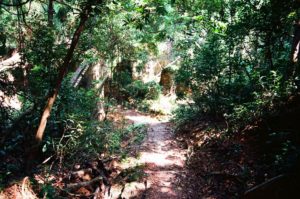
Going forward on the village, there was an open area, what could have been the meeting point for villagers in old times. An old banyan tree stands the test of time there, witnessing the village’s fate for centuries. And this could be the Banyan Pass for which the village acquired its name.
Furthermore, despite the inconvenience, the village is perhaps a good location in terms of Feng Shui. It has the mountains on its back but facing forth the sea. The waterfront of Yung Shue Au Bay is a pleasing sight.
The Oysters of Kuk Po
There comes a time to return home and so we headed back. It was at low tide so we could go on a walk at the Shui Tsum Tsui Pai islet. We stepped on the piles and piles of oyster shells to avoid the mud.
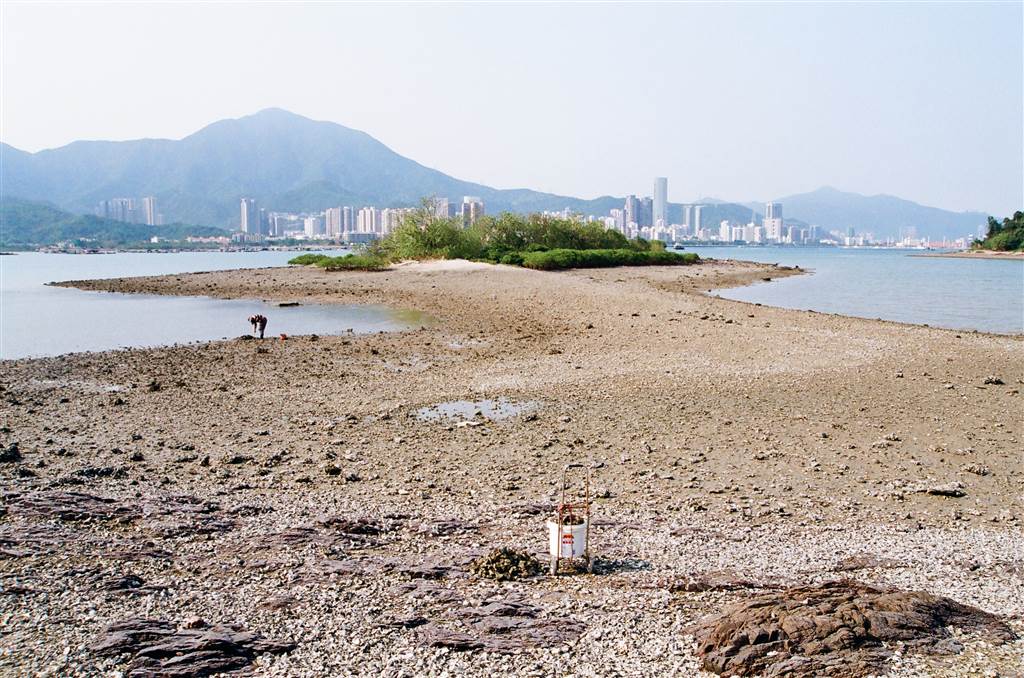
Speaking of oysters, there was a story behind the oyster trade in the area. The area is where sea water meets fresh waterways, as the lush growth of mangroves can attest. As such, it is suitable for oyster growing. These oysters are the relatives of the oysters in another oyster field in Hong Kong, namely Lau Fau Shan in Yuen Long.
In Kuk Po, a local restaurant is known for making what the Chinese call “farm cuisine” with local catch. The owner of the restaurant Tsung Kee said that some forty to fifty years ago, he had oyster in Lau Fau Shan. The villagers there told him that there were oyster seeds on the shells. He brought those shells home and just planted them in the waters. Decades later, the whole area became an oyster field ripe for harvest.[iii] Indeed, the oyster trade is still good today, as we see many older women harvesting and shucking the oysters.
It was late in the afternoon and we made it back to Luk Keng for a quick tea time at the local restaurant. Except for the mosquito bites, the day was very good.
[i] The Wikipedia on Frontier Closed Area.
[ii] See a blogger’s introduction of Yung Shue Au Here (in Chinese).
[iii] Farm Cuisine in Kuk Po , Apple Daily, February 16, 2020.

